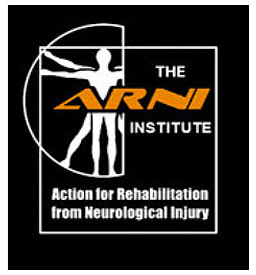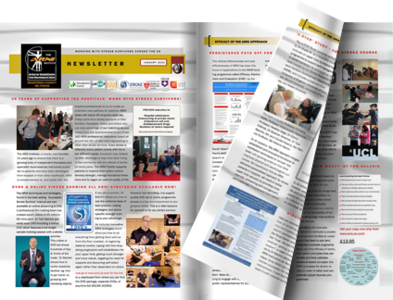 Managing your arm after stroke (MyARM)
Managing your arm after stroke (MyARM)
We want to find out about the experiences of people whose arm and hand have been severely affected by a stroke.
We also want to find out about the experiences of family members and friends.
You can
• Give an interview
Or
• Come to a focus group
Or
• Complete a survey questionnaire
News
Contact ARNI for Home Based Rehab with a Qualified Instructor
We are on Facebook
This article is a great reminder of how ARNI came about.
www.arni.uk.com
#strokerehabilitation #StrokeRecovery #neurorehab #ARNIstrokerehab #neuroplasticity #arnistroke #ARNIstrokerehab #arnistrokecharity #strokeexercise
... See MoreSee Less

Repeated attempts to use your affected limbs in training creates a form of practice that can potentially lead to further improvement in performance.
Not sure what to do? Call us on 0203 053 0111 or email support@arni.uk.com to find out if there's a trainer near you who can help you.
www.arni.uk.#ARNIstrokerehabr#arnistroket#StrokeRecoveryo#arnistrokecharitya#neuroplasticityi#strokerehabilitationa#ARNIstrokerehabr#neurorehabrehab
... See MoreSee Less

Makes you think!!
www.arni.uk.com
#ARNIstrokerehab #arnistrokecharity #StrokeRecovery #strokerehabilitation #neuroplasticity #neurorehab #ARNIstrokerehab #strokeexercise
... See MoreSee Less

By following the advice in these300 minutes of anytime online viewing videos you will totally transform yourself. You will be able to disregard the use of a wheelchair, stick and rigid plastic orthotic, as appropriate. Amongst many other things, you will learn to get down and up from the floor, balance, walk and turn without problem, become strong and robust.. and tackle all sorts of activities of daily life that you hadn’t dreamed possible after stroke. Get yours now!
#strokerehabilitation #arnistroke #strokeexercise #neuroplasticity #arnistrokecharity #neurorehab #arnistrokerehab #strokerecovery #strokeDVD
... See MoreSee Less

arni.uk.com
You are about to completely change the way you view your rehabilitation. By following the advice in these 7 DVDs you will totally transform yourself. You will be able to disregard the use of a…
Hand Recovery After Stroke: As long as you have neuroplasticity, repetitive practice, and consistency in place, then you’ll be on the fast track to recovery!
Need some help? We have trainers throughout the country who can work with you on your recovery. Call us on 0203 053 0111 or email support@arni.yk.com to find out if there's a trainer near you who can help you.
www.arni.uk.com
#arnistroke #strokeexercise #neurorehab #arnistrokerehab #neuroplasticity #strokerecovery #arnistrokecharity #strokerehabilitation #ARNIstrokerehab
... See MoreSee Less

Dr Rhonda knows a lot about natural remedies. He have helped me get cured from kidney failure and he have helped many people with his knowledge and experience. He may be able to help you too. Why not give it a try? You will be surprised by the results, Reach out to Dr Rhonda Facebook 👇👇 www.facebook.com/248551871671999
Coping strategies are used to manage your current limitations . It's always better to have some coping strategies in your armoury and not need them, than to need one and not have it!
www.arni.uk.#arnistroket#ARNIstrokerehabr#StrokeRecoveryo#strokerehabilitationa#neuroplasticityi#neurorehabr#arnistrokecharitya#strokeexercisercise
... See MoreSee Less

Although the brain is in a heightened state of plasticity immediately after stroke, neuroplasticity may be activated throughout the recovery process: whether it has been a few months or a few decades since a stroke, the brain is still capable of healing and rewiring.
Studies have shown that the brain is changing itself throughout an entire life time. This means that recovery is continuous. Whenever you stimulate your brain with positive, consistent and repetitive stimulus, the brain will respond.
www.arni.uk.com
#arnistroke #ARNIstrokerehab #strokerehabilitation #neuroplasticity #neurorehab #StrokeRecovery #arnistrokecharity
... See MoreSee Less

Hand-eye coordination isn’t just about how well or fast you see things or move your hands. Many of the things we do every day — getting dressed, making lunch, driving a car, even picking up an object — involve our eyes and hands working well together.
Here's an article for you that tells you more.
Get those hands and eyes working together, and enjoy yourself while you’re at it.
And remember if you need some help we have trainers throughout the country. Call us on 0203 053 0111 or email support@arni.uk.com to find out if there's one near you who can help you with your recovery.
... See MoreSee Less

Sports and activities that improve hand-eye coordination (and why it matters)
www.brainhq.com
Physical activity is always good for the brain. But improving your hand-eye coordination can be even better. Here’s why.
Have YOU got aphasia?
Approximately 40% of stroke survivors experience this difficulty: to comprehend or produce spoken or written language caused by a cerebrovascular accident. In half of these cases the language impairment still persists one year post-stroke. Aphasia has wide-ranging effects on the ability to function and quality of life of stroke survivors and easily leads to social isolation.
If you need help, ARNI SLT Telerehab can now help YOU, right now, wherever you are in the world!
The latest evidence shows clearly that you can conquer aphasia very successfully with the help of speech and language therapy.
And it also shows that SLT Telerehab is just as effective as in-person, face to face treatment.
We have a team of highly experienced low-cost specialist SLTs (all post-grads from Universities such as UCL, the University of Cape Town etc) who are available to help you right now, in your home, via Zoom. You get a one to one hourly service, based around your diary needs, from the comfort of your own home, with a highly experienced specialist speech and language therapist. Please enquire to arni.uk.com/get-remote-speech-language-help-now/ !
#aphasia #strokesurvivors #StrokeRecovery #strokerehabilitation #StrokeRehab #aphasiaawareness #neurorehabilitation #arni #exerciseafterstroke #strokeexercise #strokerecoveryexercises #neuroplasticity #ARNIstrokerehab
www.arni.uk.com
... See MoreSee Less

GET SPECIALIST SPEECH, LANGUAGE & COGNITIVE THERAPY WHEREVER YOU LIVE | ARNI
arni.uk.com
‘Mum had severe aphasia after suffering a dense stroke which has also left her unable to walk, with her right side paralysed. We were terribly disappointed by the lack of therapy she received to dat...
If you practice arm exercises daily – even if it’s for just 10 minutes – then the neural connections are getting constant reinforcement.
This tells your brain that arm movement is important, and your brain will become more and more efficient at moving your arm.
#stroke #strokesurvivors #neuroplasticity #strokerecovery #strokearmrehab
www.arni.uk.com
If you like this post then please share it with others. Each time that you share a post, you can directly help other people – as who knows which people in the world might find us and gain, either directly from the charity or simply by being able to copy an ‘innovative and useful’ move/trick of the trade that might help them manage after stroke.
Every time you share, you could directly help someone – as knowledge is power ;
... See MoreSee Less


